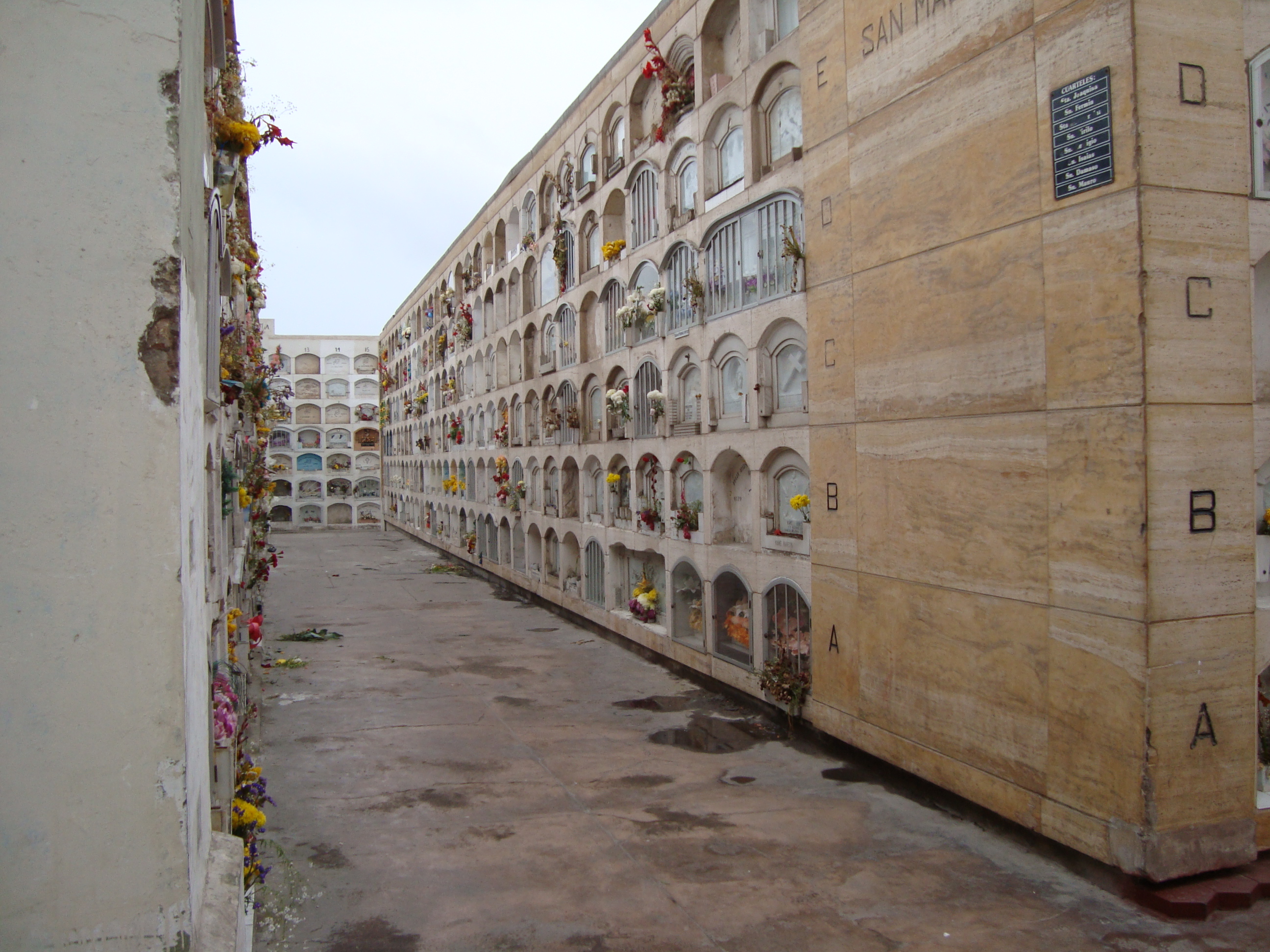 21 de junio
21 de junio
Last night, we went to the mass for P*’s mother. It was really beautiful. The whole church is the color of lavender because it represents one of the patron saints of the country. This saint is called the Lord of the Miracles after a building that collapsed in a sismo or earthquake and left only a wall upon which a certain picture of Jesus was painted. Every October, people who want to ask for a miracle wear a purple dress or covering all month. I was so sad for my friend P*. She lives one block from me in Kentucky at the house where I did my internship. She is a Peruvian, but won the lottery and has been a resident of the U.S. for several years and works in Louisville. She is very dear, and we were planning to travel together for months just on my way to Peru, so I could help her carry her things for her and her infant. There are quite a few Peruvians in Louisville, and I brought a whole extra suitcase with things just for some my friends’ and acquaintances’ families. However, when her mother suddenly died, she had to leave quickly for Peru. She still missed the burial. I’m really glad I was able to be there. At the very least, it demonstrated to her family, that even her friends from Kentucky, from another continent, mourn with them. She has many friends in Louisville through her work at Kenwood and the people at St. Williams.Â
The ceremony was very large, several hundred people. The mass honors the one month anniversary of her death and is a very common celebration in addition to the traditional funeral. It is a way to say thank you to the friends and family who supported them through their grief because at the end, a large meal is given to everyone in attendance. In this case, C*’s favorite, the dish, Ahi de gallina, which reminded me a lot of etouffe but with chicken. I think it’s very beautiful because families are usually too in shock at the time of a funeral to truly be present in spirit to celebrate the life of their loved one. There were hundreds there because her family is very well loved and respected in the barrio. Her father was involved in neighborhood politics for years, even once a city council person. The mother ran the capilla’s program to teach First Communion classes for years, which included supervising the parejas guias and young animadores who helped and included classes for parents on raising your children in the Catholic tradition.
The humorous thing – and C* warned me about this – is because I’m hanging with the Sisters and look a little different, many people assume I am a nun. They call me Hermana Emily and Madrecita. This is all a stretch considering I am not Catholic!  Sister C*, or just C*, has been excellent. She has taken charge of being my own personal tour guide. Yesterday, we went to the market, and she pointed out all the unfamiliar fruits, and the llama jerkey, charqui. Through her, I’ve met street vendors, people on the street, the people at the market she knows, and know who the neighborhood thieves are. I need to get started looking for the alpaca jerkey and meat for Dr. Markowitz. This is going to be a fun adventure. There is much more and mostly lamb, chicken, beef, and fish. Cow stomach is especially popular.Â
Callao where I’m staying is a poorer suburb of Lima. The buildings look ok from the street, but seen from above with the roofs, many of them are more like shacks for the quality of the roofs and the way houses are on top of one another. The sisters try to live as close to the lives of the people in the barrio as possible, so we eat and live very simply but comfortably. That’s what I love about my trip to Peru, many might think it is a waste of time to have to clean, cook, and hand wash their own clothing, but for me, I feel like I am gaining more of the culture because I can have deeper conversations in Spanish because I understand the language and can conform to practices of not just the people in the richest neighborhoods.
I start my charges in the parroquial school on Monday. I’m helping tutor in math and supplement their English classes. I think this will leave me plenty of time to handwash all my clothes, do my research paper, and study for the GRE in the afternoons and evenings. Hasta prontito!
UPDATE – Here are some pictures. I spent part of the afternoon at P*’s mother’s grave with the family, talking and visiting and saying some prayers. Cemetaries are very different here. This cemetery is most like ones we know in the United States but because land is so costly, in one grave spot, they bury five people. A more common way in the city because of the urban problem are more like these mausoleums that are huge and are now being constructed even with second stories. C* took me to visit to see this important and interesting cultural difference in terms of how families in a place where families and parents and grandparents are highly valued and often live In close proximity deal with the loss of a loved one. This is an economic problem, how they honor their dead and make funerals sacred when encountering a serious scarcity of resources: land (because most Latin America countries are even more urbanized than the States with megacities like Lima attracting a huge part of the population) as well as money.

